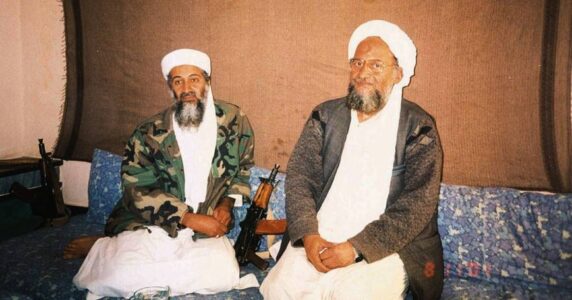
Eleven years later al-Qaeda terrorist group is stronger and on its way to recentralizing
The US withdrawal from Afghanistan paved the way for the Islamist group to regain a safe haven
This week marks 11 years since the death of Osama bin Laden, the founder and leader of al-Qaida. On May 1, 2011, US President Barack Obama announced his death, slain during a US Navy SEAL raid in Pakistan, where the terrorist leader was hiding.
Because of the time difference with the United States, bin Laden’s death in Abbottabad, Pakistan, actually took place on May 2, shortly after 1 am local time.
During bin Laden’s time, the name al-Qaida often made it into the headlines and newsrooms due to spectacular attacks on Western targets.
However, al-Qaida is still active today, currently in the process of shifting its operational system and expanding through the Middle East and many parts of Africa and Asia.
Dr. Hans-Jakob Schindler, senior director of the Counter Extremism Project and former coordinator of the ISIL, al-Qaida, and Taliban Monitoring Team of the UN Security Council, told The Media Line that the Taliban’s takeover of Afghanistan last August has led to a significant change in al-Qaida’s approach to its operations.
He explained that since bin Laden’s death and with the rise of his successor, Ayman al-Zawahiri, al-Qaida became decentralized. At the same time, it has managed to expand through affiliates, stepping back from centralized, large-scale terrorist operations against the West, and concentrating on creating a broader base in Islamic countries.
Now, for the first time in 20 years, al-Qaida has a safe haven, and the consequences of that are starting to manifest themselves, Schindler said.
In time, al-Qaida may reach a point where it continues to have affiliates around the world to attack its “near enemies” in the Islamic world, but it will no longer exercise restraint in attacking its “far enemies” based in Europe and the US because it again has a protected area in Afghanistan, protected by the Taliban, he explained.
“You don’t need thousands of individuals. You need a handful to organize a spectacular terror attack,” Schindler said.
“For the first time since 2001 al-Qaida is again in a position again to do, and to do it even better than it did it before 2001 because it no longer needs to train all these fighters for the Taliban because the Taliban does not have to fight the Northern Alliance [in northeastern Afghanistan]. Al-Qaida can now concentrate again on just training the terrorism elite,” he added.
When bin Laden led al-Qaida, he kept the membership small.
After the group was kicked out of Afghanistan by the US-led invasion that began in late 2001, many of the small, elite group of al-Qaida fighters returned to their home countries where they opened affiliate groups, Schindler noted.
He added that bin Laden was never really clear about his opinion on that. But he refused al-Shabab’s pledge of allegiance several times, despite the Somalia-based al-Qaida ideology group’s tremendous power.
After bin Laden’s death, Zawahiri accepted al-Shabab’s and many other groups’ pledges of allegiance.
Daniele Garofalo, an analyst of jihadist terrorism, explained that today al-Qaida is strongly decentralized.
Its affiliates are “very independent, propaganda is less frequent and, above all, al-Qaida conducts a low profile operation, which tries to strike mainly security and military forces,” he told The Media Line.
Dr. Francisco Jorge Gonçalves, from the Research Centre of the Institute of Political Studies at the Catholic University of Portugal, added in an interview with The Media Line that although “al-Qaida Central” is the group’s hub, the real power lies in its branches and affiliates, and their capacity to initiate terrorist attacks and attract recruits.
“After all, the al-Qaida ideology is very alive,” he said.
This is how it has been since the death of bin Laden. However, the renewed base in Afghanistan may change all that.
Garofalo suggested that as long as the Taliban is in power in Afghanistan, al-Qaida will have a safe haven.
“The Taliban will never remove al-Qaida from Afghanistan; at the most, they will ask it never to operate in the country, but to use it only as a safe haven. I say this because the 20-year relationship between the Taliban and al-Qaida is now generational and familial, a relationship that neither of them wants to give up,” he said.
Schindler highlighted a strong indication that al-Qaida’s renewed security may lead to its recentralization and to it once again planning “spectacular attacks” against Western targets.
During 2019 and 2020, Zawahiri made no public statements and didn’t release a single video, causing many to believe he had died.
However, in the past year, Zawahiri has posted four videos, which in Schindler’s opinion is a consequence of him feeling much more secure than before.
“He is trying to project an image of power, including to the rival terrorist groups like ISIS/ISIL,” said Gonçalves.
Zawahiri’s role until now was to “stay alive” in order to be the symbol of the ideology to which al-Qaida affiliates spread across the globe pledged allegiance, explained Schindler.
Now, Zawahiri is very active. The frequency and openness of his appearances “could mean that he is shifting to a more active role.
He may actually now actively work in the role that bin Laden had, with planning centralized, training centralized, going back to 20 years ago. He is shifting to be the active leader of the network,” Schindler said.
Source: The Media Line





